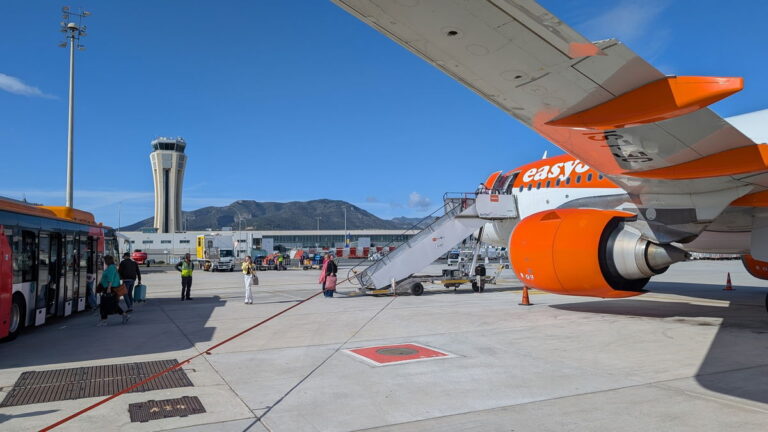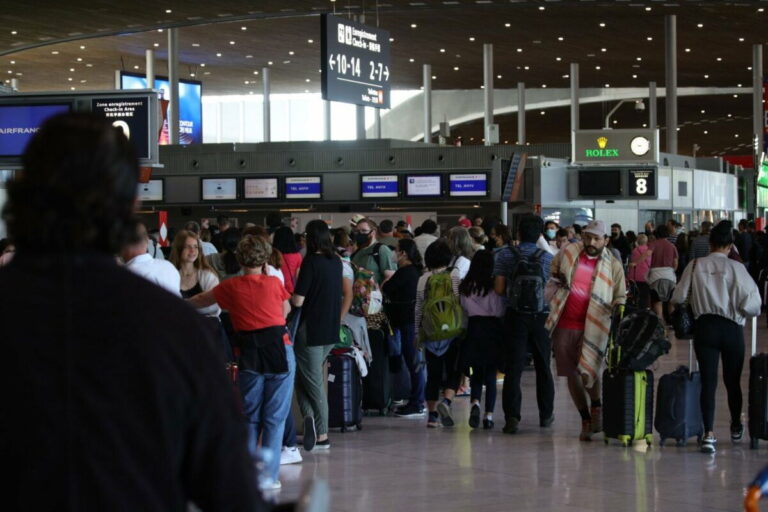
France confirms readiness for the EU’s new Entry/Exit System, bringing facial scans, fingerprint checks, and longer waits for British travellers from October. EU flag behind barbed wire with “No Entry” sign symbolising new EU border checks at Dover, highlighting upcoming travel restrictions, passport scans, and autumn delays for British travellers. Credit: Kittyfly, Shutterstock
Britain’s busiest port faces a travel shake-up this autumn as France gives the green light for the EU’s new Entry/Exit System (EES), with an October start expected. The system will require Brits heading to Europe to have their faces snapped, fingerprints scanned, and passports logged, sparking fears of huge queues at Dover. Port boss Doug Bannister warned of “big change” after summer, scrapping plans to hand tablets into cars over fears of tailbacks. Instead, drivers will park on new reclaimed land, get out to register biometrics at kiosks, then drive on for final checks. Coach passengers face similar stops at 24 self-service kiosks before ‘sealed’ coaches continue.
Dover gets ready for big border check changes
Britain’s busiest port is staring down the barrel of a travel nightmare as France gives the green light for Europe’s new border checks to kick off this autumn. The EU’s Entry/Exit System (EES) – which promises to snap, scan, and store every traveller’s face and fingerprints – is set to turn the White Cliffs into a white-knuckle ride for anyone hoping to hop across the Channel.
They say you should always expect the unexpected at Dover – but this autumn, chaos could be right on schedule.
The European Union has confirmed it’s gearing up for an October D-Day for the new Entry/Exit System (EES) – a digital border scheme set to transform travel for millions heading between Britain and Europe. And with France giving the green light, the EU’s final countdown is officially underway.
“I am very glad to announce we received the last readiness declarations allowing us to fix a date for start of operations in October,” declared EU Commissioner Magnus Brunner in an Official EU statement in June.
What is EES – and why should you care?
The EES will track every non-EU, non-EEA, non-Swiss visitor to the Schengen zone, including Brits heading for holidays in France, Spain or beyond. The system will snap a facial photo, scan fingerprints, log passport details, and note the dates you enter and exit the zone.
Dover digs in
Port of Dover chief executive Doug Bannister told reporters it’ll be ‘business as usual’ this summer – but warned of ‘big change’ come autumn. The port has been scrambling to prepare, scrapping original plans to hand tablets into cars (imagine the mayhem) after fears of mile-long tailbacks.
Instead, a new area on reclaimed land in the western docks will greet drivers, who’ll now park up, pile out of their cars, and enter a building to pre-register at kiosks. After giving their biometrics, they’ll drive to the eastern docks for final checks.
Coaches get the conveyor-belt treatment
If you’re on a coach, expect a pit stop at the western docks’ new coach park. There, passengers will tumble out to enter data at one of 24 self-service kiosks. Once everyone’s logged, the coach gets ‘sealed’ (like a suspicious shipping container) before trundling off to the ferry terminal.
Why the rush?
The EU’s October launch follows France, Germany and the Netherlands confirming readiness. All other Schengen states had already declared themselves good to go last year. The final regulation on the phased start of EES is ready and expected to be signed off in July, kicking off a six-month window to full implementation.
The Frontex app: High-tech hope or tech headache?
The EU border agency Frontex has launched a Travel to Europe app, promising to let passengers scan their passports and snap a selfie at home to speed up border queues. But there’s a hitch: Dover doesn’t expect to have the app running for the first phase of the rollout, casting doubt on any quick fixes.
What’s next?
Once EES is fully in place, Etias – Europe’s answer to America’s ESTA – will follow six months later. This online pre-approval system will cost travellers €7 (if the European Commission doesn’t hike it first) and grant three years’ access to the Schengen area, or until your passport expires.
The European Commission is already eyeing a fee increase, citing inflation and the spiralling cost of modernising border checks – and perhaps inspired by the UK’s own ETA system, which slaps EU citizens with a €19 bill.
Why it matters
Passengers are being urged to plan for longer waits – and perhaps brace for a few biometric teething troubles. But on the plus side, once you’re registered, future trips could be smoother sailing.
Until then, pack your patience along with your passport.
More travel news.
More European news.







